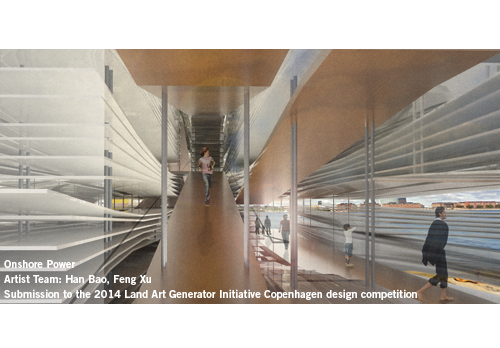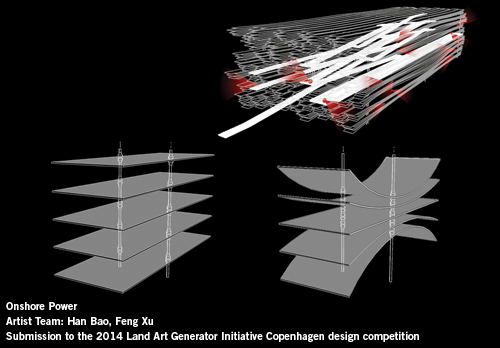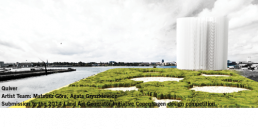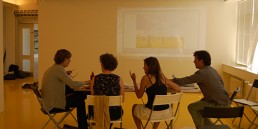Onshore Power
Submission to the 2014 Land Art Generator Initiative Copenhagen design competition
Artist Team: Han Bao, Feng Xu
Artist Location: Melbourne, Australia
Energy Technologies: wind-driven hydraulic cylinder generators
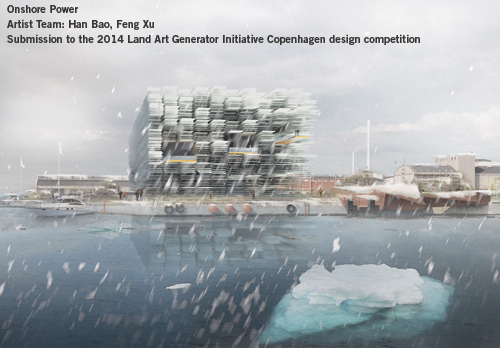
It is the finest design that can change our lives, and it is the smallest changes that lead us to challenge our everyday perspectives. Onshore Power is situated at the interface between energy-producing infrastructures and human use. It achieves this through an integration of the ecological flows of wind, water, energy, and mobility.
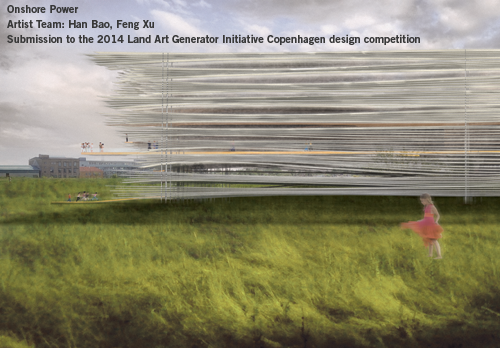

A simple physics experiment can demonstrate that two strips of paper will stick together when wind blows between them due to the change in air pressure. Using this physical property, the hundreds of extremely lightweight plates that comprise Onshore Power move closer to each other and spring back to their original places as high winds pass through. The movement of plates transferred to the vertical shafts generates electricity.
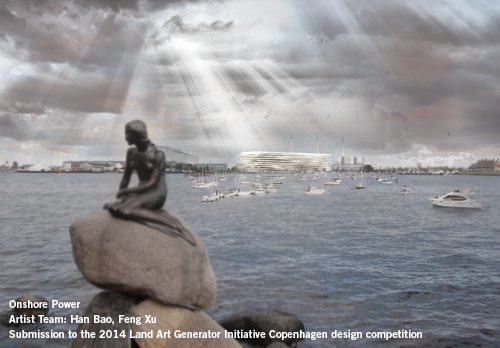
Onshore Power is at once a generator, a recharger for boats, a dock, and a destination. It is made up of layers of flexible plates aligned to the course of the wind, with walkways and lookout points traced through its interior. As wind blows across the structures, the movement generated in the plates creates energy that is converted and stored in the micro-tubes that scaffolds the structure. The experience within Onshore Power is a theatrical and powerful one, where the normally invisible strength of wind is acted out through the oscillations of the plates. The entire process of energy production, conduction, and consumption that people have come to take for granted is suddenly made visible.
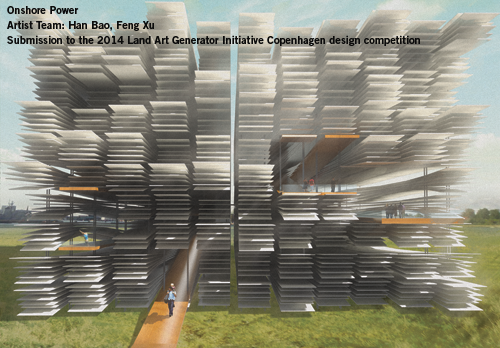
Onshore Power creates possibilities for the foreseeable future, and it raises the questions: who are we and what we are connecting with?
